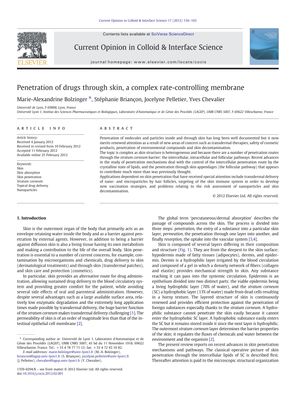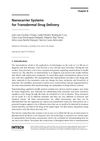Penetration of Drugs Through Skin: A Complex Rate-Controlling Membrane
June 2012
stratum corneum intercellular route intracellular route follicular route penetration enhancers transdermal drug delivery nanoparticles nanocarriers transcutaneous vaccination hair follicles pig skin model nanoparticle accumulation skin permeability drug-skin interactions skin barrier drug delivery skin penetration nanoparticle delivery vaccine delivery hair follicle penetration

TLDR The skin is a complex barrier for drug penetration, but understanding its structure and interactions can improve drug delivery methods.
The document from June 1, 2012, reviews the complexities of drug penetration through the skin, emphasizing the significance of the stratum corneum as a barrier and the various pathways drugs can take, including intercellular, intracellular, and follicular routes. It notes that the follicular pathway is particularly important for the penetration of particles and that the crystalline state of lipids plays a role in controlling intercellular penetration. The review also discusses the impact of penetration enhancers on skin permeability and the applications of skin penetration in transdermal drug delivery, vaccination strategies, and risk assessment of nanoparticles in skin decontamination. It underscores the importance of understanding the skin's microstructure and drug-skin interactions for improving drug delivery systems. Additionally, the document reports on studies showing the contribution of hair follicles to drug permeation, the use of pig skin as a model for human skin, the accumulation of nanoparticles in follicular structures, and the potential of nanocarriers for transcutaneous vaccination. It also addresses the health risks and benefits of nanoparticle penetration, indicating that while skin acts as a barrier, it can also metabolically process penetrating substances, and that nanoparticles offer promising avenues for targeted drug delivery and vaccination, but also pose potential health risks that warrant further study.









